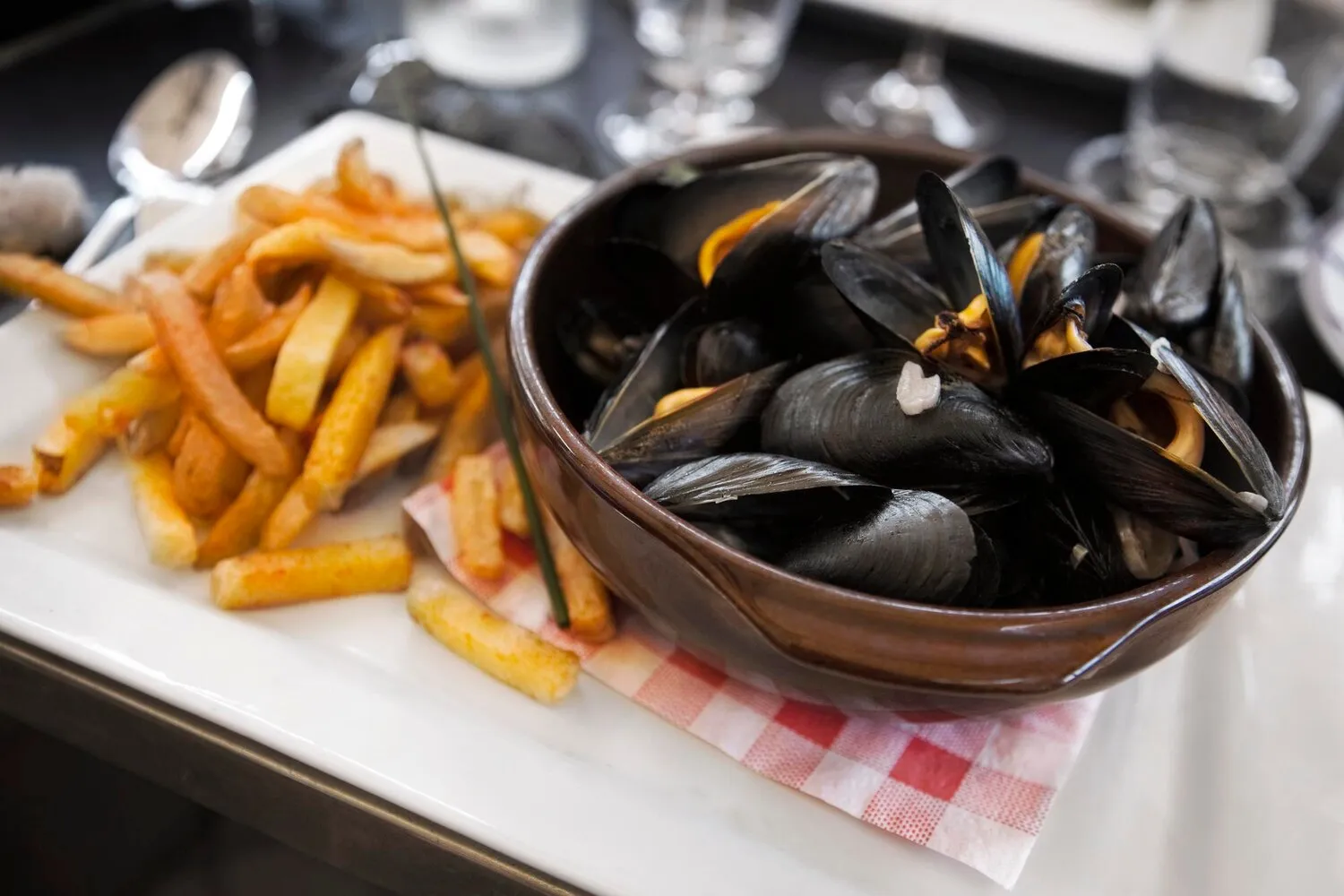
Moules Frites
Mussels prepared in various ways served with fries, a Belgian classic.
Nutrition Facts
* The % Daily Value (DV) tells you how much a nutrient in a serving of food contributes to a daily diet. 2,000 calories a day is used for general nutrition advice.
The exact origins are debated, but Moules Frites likely emerged in Belgium, possibly combining a popular seafood dish (mussels) with the readily available and beloved Belgian frites. Mussels were a common, affordable food source along the coast, and fried potatoes had become a staple in Belgian cuisine. It reflects a convergence of coastal and inland culinary traditions.
Moules Frites is a national dish of Belgium and holds a significant place in its culinary culture. It's more than just a meal; it's a social experience, often enjoyed in large portions at cafes and brasseries.
Café Culture
Moules Frites is a staple on the menu of most Belgian cafés and brasseries, making it a quintessential part of the Belgian dining experience. Sharing a large pot of Moules Frites with friends and family is a common social activity.
Variations and Regionality
While Moules Marinières (mussels cooked in white wine, garlic, and herbs) is the most classic preparation, many regional and personal variations exist. These can reflect local ingredients and culinary preferences, showcasing the dish's adaptability.
National Pride
Moules Frites is a symbol of Belgian national identity and is often promoted as a key culinary attraction for tourists. It represents the country's unique blend of French and Flemish influences.
Moules Frites offers a delightful combination of briny, savory mussels and crispy, salty fries. The flavor profile largely depends on the preparation of the mussels, ranging from simple and clean to rich and creamy.
The mussels themselves provide a briny, slightly sweet flavor of the sea. The broth, often white wine-based with garlic, shallots, and herbs like parsley and thyme, adds savory depth and aromatic complexity. Variations can include cream, beer, or even tomato, influencing the overall flavor. The fries offer a starchy, crispy counterpoint, often seasoned simply with salt, and are perfect for soaking up the flavorful broth.
Shell as a Utensil
Traditionally, an empty mussel shell is used as a tool to pluck the mussels from their shells. This is a more efficient and culturally appropriate way to enjoy the dish than using a fork.
Soaking Up the Broth
Don't be afraid to dip your fries in the broth! The flavorful sauce is a key component of the dish, and the fries are designed to complement and absorb it. Some restaurants will give bread for soaking as well.
Discarding Unopened Mussels
Any mussels that remain closed after cooking should be discarded. They may not be safe to eat.
Pairing suggestions
Belgian beer is the obvious choice. A crisp lager or a light ale complements the savory flavor of the mussels. A dry white wine like Sauvignon Blanc also goes well.
Explore additional Belgian dishes and restaurants
Explore BelgianDiscover top dining spots and culinary experiences in Charleroi.
Explore CharleroiLearn more about the food culture, restaurant scene, and culinary heritage of Belgium.
Explore Belgium